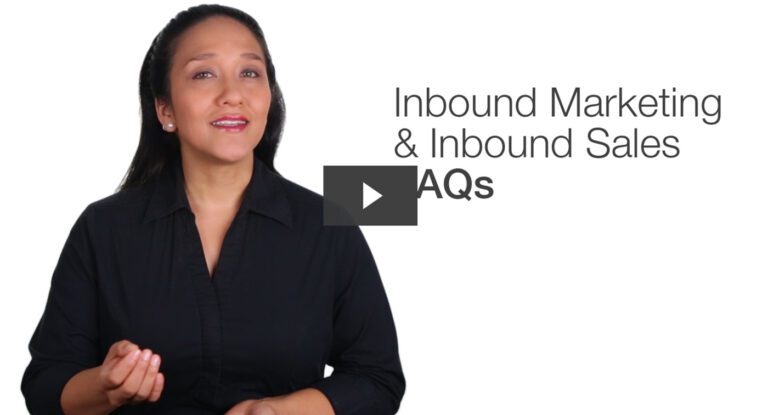Video content represents 74% of all internet traffic. Well, the New Year bells have finally been rung, bringing in resolutions and goals to actualize in 2018.
With that said, have you included video into your marketing strategy? If not, what are you waiting for?
In today’s FAQ Friday, we’re answering your burning video marketing questions to help you jumpstart your new year with an effective video marketing plan.
Online video is the Swiss army knife of internet marketing. It really can be used all over the customer lifecycle, whether it’s customer service, marketing, or even recruitment.—Mark Robertson
Why is video marketing necessary for my inbound marketing strategy?
The internet is a hub for visual content. From animations, movies, live videos, and so on, 2016 was a year of increased video consumption as well as video creation. YouTube, Facebook, Vimeo, and Wistia are just a few brands that provide hosting and distribution capabilities for everyday users.
One reason people are wary about creating video content in the first place is the overwhelming amount of different video platforms out there. Especially in this new year, there is an increasing amount of video creation, hosting, and distribution platforms for you to choose from. So, if you don’t know why you want to create video, who to create for, and where to host it online, it’s understandable why you may feel like you don’t need online video.
However, these questions are just insecurities in disguise, and what you are disguising is the lack of knowledge you have about your audience. If you knew your audience, you’d know what type of content to create, what topics to discuss within your content, and where your audience is online in order to effectively distribute it.
For example, let’s say you take the time to analyze your audience’s behavior. In fact, you find that 75% of them spend their time watching Facebook videos while the other 25% watch YouTube videos. With this data in mind, your decision is crystal clear. You host on both platforms.
Wait, what?
If you’re confused, that’s okay. Let’s break this idea down. In the beginnings of online video marketing, most people hosted solely on one platform, and mainly that platform was YouTube. Now with other hosting platforms like Wistia and Facebook, you can focus your efforts in more than one video platform in order to maximize your reach.
Don’t hinder yourself from the benefits of video marketing due to an underwhelming insecurity. For inspiration, take a look at the following statistics and infographic mapping out just how important video marketing is in 2018:
- In a 2016 HubSpot survey, 43% of consumers wanted to see more video content in 2016.
- 76.5% of marketers and small business owners in an Animoto survey who have used video marketing say it had a direct impact on their business.
- 4X as many consumers would prefer to watch a video about a product than to read about it.
- 62% of B2B marketers rated videos as an effective content marketing tactic in 2016.
- Half of YouTube subscribers between the ages of 18 and 34 would drop whatever they were doing to watch a new video from their favorite channel.
What are some current video marketing trends that are actually effective?
With the rise of online video, you may have noticed an increase in social video as well as live video in 2016. These trends didn’t come out of the blue. See for yourself how users created and influenced the following video trends:
- The rise of social video:
- Facebook users spend 3X more time watching live videos than traditional videos.
- Snapchat users watch 10 billion videos per day.
- Binge as you go, i.e., watching videos on mobile devices:
- 51% of all video plays are on mobile devices—this growth represents a 15% increase from 2015 and a 203% increase from 2014.
- 85% of adults consume content on multiple devices at the same time.
- Videos under five minutes in length account for 55% of total video consumption time on smartphones.
- Experiment with how users view your videos:
- 29% more people viewed a 360-degree video than the same video in traditional format.
These current trends are in full effect in 2018. And with Twitter and Periscope launching their 360 degree live video capability, in 2018, it’s time to start being a practitioner in video marketing. And you can do that by incorporating these effective and successful trends in your marketing strategy.
The play button is the most compelling call to action on the web.—Michael Litt
What are some video marketing tips to help market my business?
- Invest your efforts into social video: Facebook, Snapchat, and even LinkedIn are incorporating video into their social platforms. Discover the top three social platforms your audience congregates in the most. Then create video content for those specific platforms. You can do a live 360 degree behind-the-scenes product launch. Or you can even host a Snapchat Q&A session. Whatever your audience needs, they look to you for answers. So provide solutions in an interactive and engaging way all in one place with social video.
- Create an aligned content calendar: If you have a weekly blog and social media posts, you probably don’t want to add another content creation schedule onto the list. However, if you align your topics together with the types of content you create on a weekly basis, you won’t feel like you’re tacking on another burden into your 2018 marketing strategy. See what topics your audience is interested in. Create weekly themes based around that topic. Then, create a long form blog post, use some of your blog post as a script for your video content, and then create a social media post or campaign around your content. That way, your audience has not only a blog post to look forward to, but also an online video.
Create videos with a distinct purpose. Anticipate your ideal consumer’s needs and create content to address those needs.—Brian Rotsztein
If you have questions you would like to see featured in our weekly FAQ Friday, please submit them in the comments below or mention us @DirectImages on Twitter. Until next FAQ Friday, keep your communication lines open. Don’t know the answer—just ASK.
Subscribe to our BLOG
Stay in touch & learn how to attract customers, become a thought leader, create effective marketing campaigns, & more.






